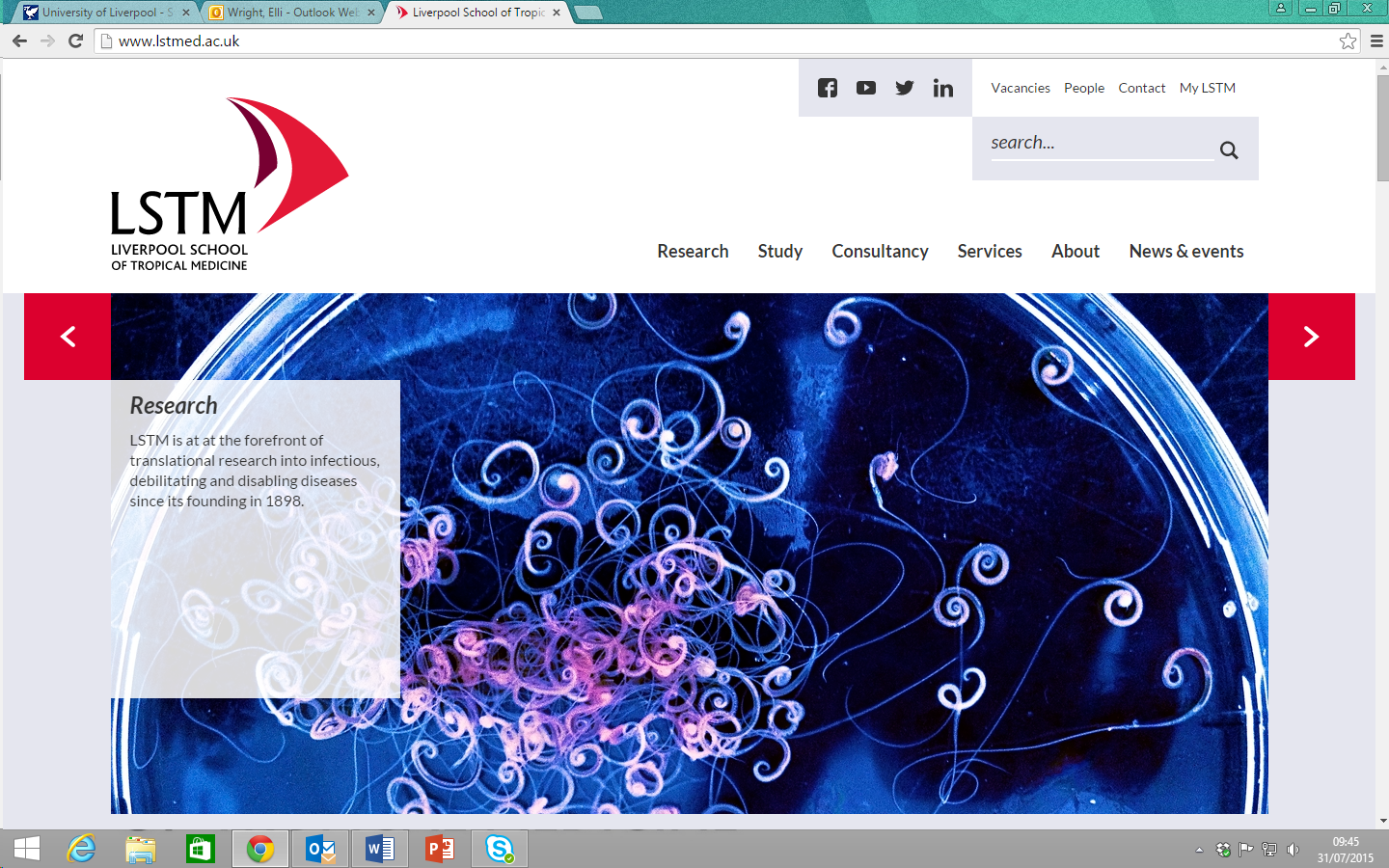
LSTM has launched a new look website to highlight the research and services undertaken in Liverpool and across the more than 60 countries in which it works.
The information on the site is presented in terms of research areas, themes and topics and linking these with researchers, centres, units and consortia where relevant. In this way it is hoped that it will better highlight LSTM’s translational research process, one of LSTM’s key organistational strengths.
The new site, designed and built by Manta Ray Media, is the product of an extensive consultation period over the past 15 months with many suggestions made and feedback given by LSTM’s management and staff throughout the process. It will be managed and coordinated by the Communications Team, but will be contributed to by all within the organisation, ensuring that it remains as up to date and relevant as possible.
LSTM’s Director of Communications, Diderik van Halsema said: “The process has been collaborative throughout and we are confident that the new site will enhance LSTM’s online research and study profile and become a great support tool in trying to achieve LSTM’s strategic objectives.”
Divided into sections headed: research, study, consultancy, services, about and news & events the site is easy to navigate and allows people to search by staff member or department as well as learning about all the cross organisational work carried out across LSTM’s central themes of research. Illustrated with impact stories and case studies throughout, the website offers a window into the work carried out in bringing lifesaving interventions directly from the bench and into the field where they are needed most.
“The real work is only just beginning,” continued Diderik van Halsema: “the website will now develop and grow with the work of LSTM, providing a real opportunity for partners and the public to understand the positive impact that the research and services carried out at LSTM have on the health and wellbeing of people living in some of the world’s poorest communities.”